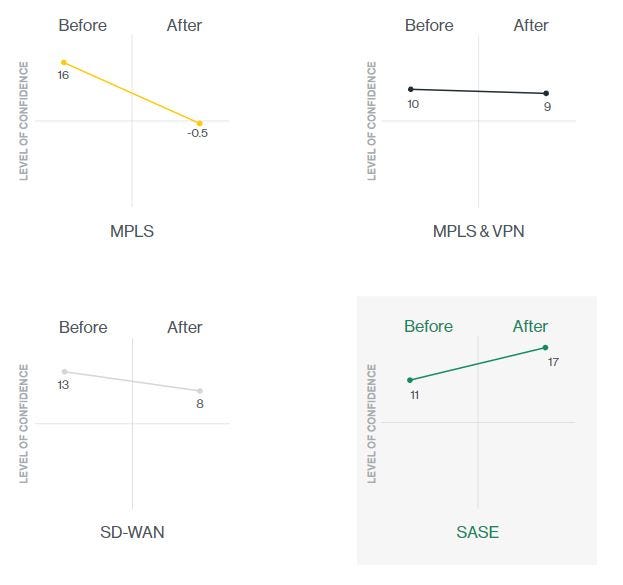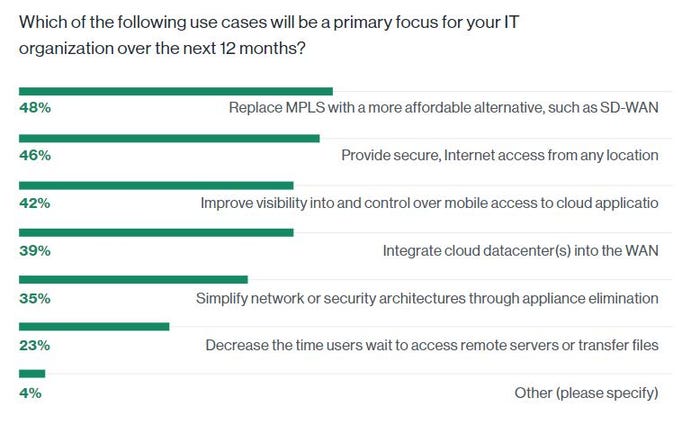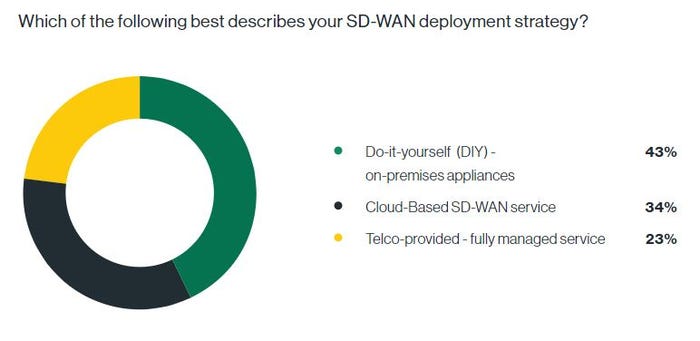Cato Networks Study Exposes SD-WAN Security, Agility Concerns
Cato Networks unveiled results from its "Network Transformation in 2020" study.

Businesses are concerned about their networks after undergoing a digital transformation, according to a new Cato Networks study.
The 37-page report details multiple areas – including agility and security – where enterprises lack confidence in their WAN architectures. And SD-WAN, as the study argues, is not sufficient as merely a cost saver or MPLS replacement. The majority (74%) of SD-WAN adopters said they now have “significantly less confidence” in their network following digital transformation.
Oof.

Cato’s Shlomo Kramer
“Enterprises need to anticipate their future requirements if they’re to remain confident in their WAN transformation,” Cato Networks CEO Shlomo Kramer said. “Thinking only about MPLS replacement leads to incremental, point-solution acquisitions when confronted by digital initiatives, making their networks more complex and costly to run.”
Two key concerns are cloud connectivity and security. While the majority of respondents said cloud-hosted applications will be more important to their business than data center-hosted apps, 69% of companies with SD-WAN said they felt less confident in their network’s ability to obtain cloud connectivity. Security is drawing similar apprehension, as only 37% said they felt confident in their network’s ability to defend their locations from cyberthreats.
The graphic below shows the security-related confidence businesses feel about their network environments – which vary from MPLS, MPLS and internet-based VPN, SD-WAN and a secure access service edge (SASE) – before and after a digital transformation. SASE was the only category that grew in user confidence, while even SD-WAN tipped downward.

Source: Cato Networks’ Networking in 2020 Study
Cato’s report cited the difficulties of overseeing mobile workers, cloud data centers and cloud applications.
“SD-WAN fails to restrict access to specific applications or provide the advanced security tools needed to protect all edges — mobile devices, sites, and cloud resources,” the study’s authors wrote. “By contrast, SASE confidence grew post-digital transformation. Converging a complete security stack into the network allows SASE to bring granular control to sites, mobile and cloud resources.”
We detailed the SASE trend while covering Open Systems’ foray into North America. Cato described itself as a SASE provider in a recent announcement, in which it launched a new channel partner program.
Cato surveyed 1,333 IT professionals last fall about their confidence in their digital transformation efforts, phrasing the questions in terms of agility, security, performance, and management and operations. Four in five respondents categorized themselves as extremely involved or at least moderately involved in a digital transformation initiative. Only 10% said they did not have plans to deploy SD-WAN or weren’t sure.

Source: Cato Networks’ Networking in 2020 Study
DIY
A plurality (43%) of respondents said they deploy SD-WAN through on-premises, do-it-yourself appliances.

Source: Cato Networks’ Networking in 2020 Study
That statistic fits well with a recent Gartner report, which stated that more than 60% of North American companies take the DIY route.
Cato’s respondents were divided fairly evenly among North America, Europe and Asia-headquartered companies. An SD-WAN vendor or carrier was the seller 54% of the time, with an MSP or systems integrator accounting for 41%.
The study also showed customers’ chief complaints with telco providers. The time required for a telco to deploy new locations was respondents’ biggest gripe. A previous Cato study addressed similar frustration about wait times and customer service.
Prepare for 2⃣0⃣2⃣0⃣ with insights from 1300+ IT professionals. Download the latest global enterprise survey: https://t.co/12tqYR3MBk
— Cato Networks (@CatoNetworks) January 21, 2020
Read more about:
AgentsAbout the Author(s)
You May Also Like


